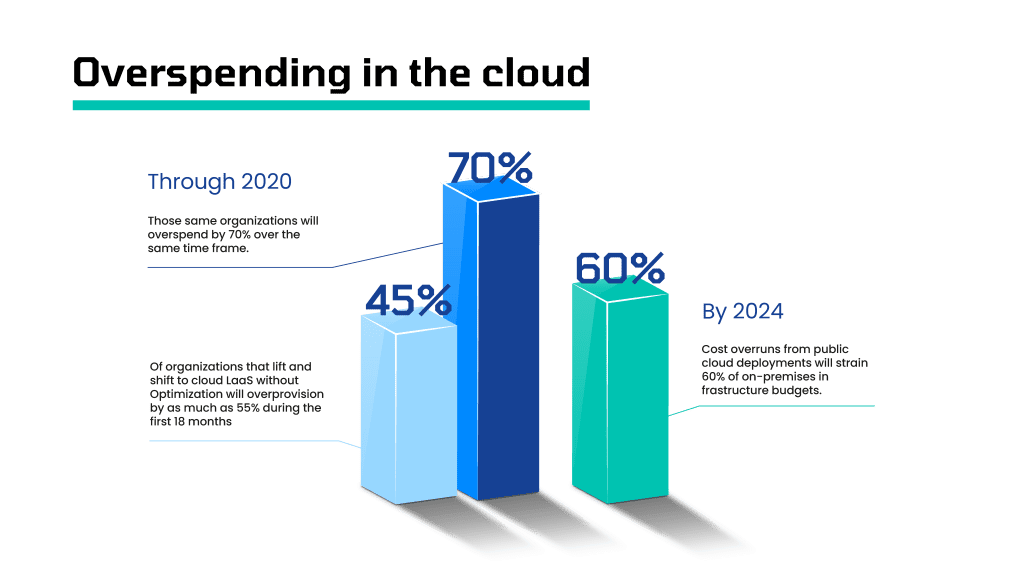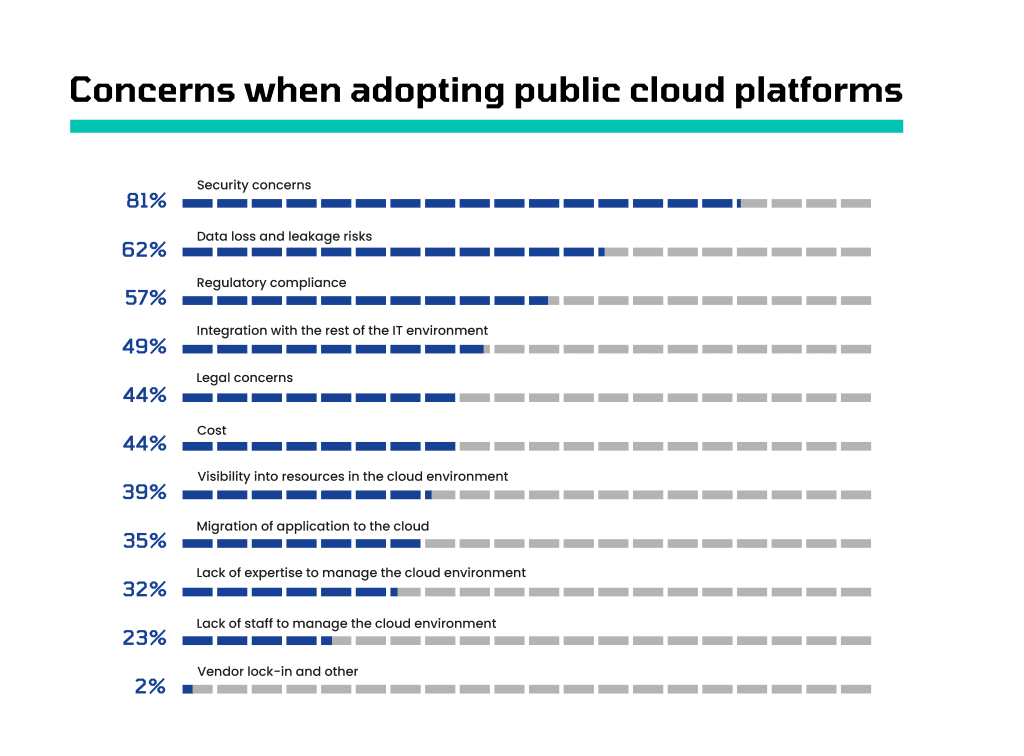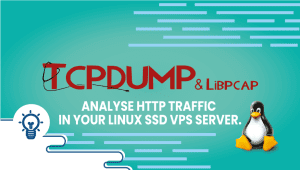Fact companies are moving On-premise Deployments from the cloud.
The shift from cloud-based to on-premise deployments is becoming a prevalent trend in the technology industry. As more and more companies are moving their data and applications back to their own physical servers, this change is driven by a number of factors. One of the primary reasons for this shift is the increasing concern about data security and privacy in the cloud. Companies are hesitant to store sensitive information in the cloud due to concerns about data breaches and cyber attacks.
In this article, we will examine the various factors and considerations that contribute to the growing trend of shifting from cloud-based to on-premise deployments in the technology industry. We will delve into the motivations behind this trend, including concerns about data security and privacy, compliance requirements, and the need for greater control over IT infrastructure. Additionally, we will explore the benefits that on-premise solutions can offer to organizations, such as the ability to take advantage of new technologies and tools, and the increased control over data access. We will also explore the implications of this trend for businesses and the technology industry as a whole. Overall, this article aims to provide a comprehensive overview of the shift from cloud to on-premise deployments and its significance in the technology industry.
Motivations behind the shift towards on-premise deployments
The move from cloud computing to on-premise deployments is a growing trend in the technology industry, and it refers to the process of transferring data and applications from cloud servers to physical servers that are owned and operated by the organization. This transition is driven by various reasons, including security concerns, compliance regulations, and the need for greater control over IT infrastructure.
One of the main reasons for the shift towards on-premise deployments is the increasing concern about data security and privacy in the cloud. As more companies store sensitive information in the cloud, there is a growing fear of data breaches and cyber attacks. By moving to on-premise deployments, organizations can better protect their data by implementing advanced security measures and ensuring that only authorized parties have access to it. Another important factor that is driving this trend is compliance regulations. Certain industries such as finance and healthcare are heavily regulated, and they have strict rules that require certain types of data to be stored on-premise. By moving to on-premise deployments, companies can comply with these regulations and avoid potential legal penalties.
On-premise deployments also offer companies more flexibility and control over their IT infrastructure. They can customize their setup and tailor it to their specific needs, which allows them to take advantage of new technologies and tools that were previously not available in the cloud. Additionally, with on-premise deployments, companies have complete control over the physical environment where their data is stored, which includes physical security measures such as access controls, fire suppression systems, and power backup systems.
Furthermore, companies are increasingly looking to on-premise deployments as a way to reduce costs associated with cloud services. With on-premise deployments, companies can avoid recurring costs associated with cloud services, and they can also have more predictability in terms of costs and budgeting.
Challenges Encountered by Companies after the Cloud Migration Process

When migrating to the cloud data sovereignty is an important factor that companies need to consider. They need to ensure that their data is stored and processed in accordance with relevant legal and regulatory requirements, and that they are working with cloud providers that can help them meet these requirements.

Benefits of On-Premise Deployments Compared to Cloud
One of the key benefits of on-premise deployments is the increased control over the physical environment where data is stored. This includes the implementation of physical security measures such as access controls, fire suppression systems, and power backup systems to ensure the safety and security of the data.
When considering a shift towards on-premise deployments, it is important to consider the following factors:
Flexibility and Control: Organizations that opt for on-premise deployments have more control over their IT infrastructure and can customize their setup to suit their unique needs and requirements. This level of control is not always possible with cloud-based solutions.
Enhanced Data Security: Security is a major concern for organizations when it comes to hosting data, and on-premise deployments offer enhanced security measures to ensure that only authorized parties have access to sensitive data.
Compliance Adherence: Certain industries are heavily regulated and have strict rules that require specific types of data to be stored on-premise. On-premise deployments allow organizations to comply with these regulations and avoid potential legal penalties.
Cost-effective: On-premise deployments can be more cost-effective in the long run as they eliminate recurring costs associated with cloud services.
High Availability: On-premise deployments give organizations the freedom to have full control over the physical environment where data is stored, including physical security measures such as access controls, fire suppression systems, and power backup systems, which ensures that their data is always available.
Customization: On-premise deployments offer organizations more customization options, allowing them to adapt the system to their specific requirements and needs.
Considerations and Challenges for Organizations During the Transition
As organizations consider moving from cloud to on-premise deployments, there are certain challenges and considerations that must be taken into account.
Capital Expenditure: One of the biggest challenges is the upfront costs associated with on-premise deployments. Organizations must invest in hardware and infrastructure, which can be a significant capital expenditure.
Maintenance and Upkeep: On-premise deployments require regular maintenance and upkeep, which can be time-consuming and costly. Organizations must have the necessary resources and expertise to maintain and update their infrastructure.
Scalability: On-premise deployments may not be as scalable as cloud-based solutions, making it difficult for organizations to accommodate sudden increases in demand for their services.
Limited Access: On-premise deployments may limit access to data and applications for remote workers or employees on the go, as they are typically only accessible from within the organization’s network.
Lack of Expertise: Some organizations may lack the necessary expertise to manage and maintain an on-premise infrastructure, which can lead to costly mistakes and downtime.
Compliance and Regulations: Organizations must ensure that they comply with all relevant regulatory requirements when moving to on-premise deployments, as failure to do so can result in legal penalties.
Data Backup and Recovery: Organizations must have robust data backup and recovery systems in place to ensure that their data is protected in the event of a disaster or outage.
Overall, while on-premise deployments offer many benefits, organizations must weigh the costs and challenges associated with the shift, and ensure that they have the resources and expertise to effectively manage and maintain their infrastructure. The future of on-premise and cloud deployments in organizations is a topic that continues to evolve as technology advances and businesses adapt to changing market conditions. Both deployment options have their own unique advantages and disadvantages, and organizations must weigh these factors when deciding which approach is best for their specific needs.
It’s important for companies to carefully consider their unique requirements and make a decision that aligns with their overall business strategy. Ultimately, the choice between on-premise and cloud deployments will depend on the specific needs and goals of the organization.
Hybrid Cloud : A Solution to the Shift to On-Premise Deployments
The hybrid cloud has emerged as a solution to address the shift from cloud to on-premise deployments, providing organizations with the benefits of both worlds. With the hybrid cloud, organizations can take advantage of the scalability and cost-effectiveness of the public cloud, while also maintaining control and security over their critical data and applications with on-premise deployment.
The hybrid cloud allows organizations to select the best deployment option for each of their workloads based on their specific requirements, such as security, performance, and cost. For example, sensitive data and applications can be kept on-premise, while non-sensitive data and less critical applications can be run in the public cloud. The hybrid cloud also enables organizations to move their workloads between public and private clouds as needed, providing greater flexibility and allowing them to respond to changes in their business environment more effectively. By combining the strengths of both deployment models, the hybrid cloud provides organizations with a more holistic and cost-effective approach to IT deployment, making it an ideal solution for those looking to balance their need for control and security with the benefits of cloud deployment.
The hybrid cloud offers numerous advantages over traditional on-premise and public cloud solutions. Some of these advantages include:
Reduced Expenses: Hybrid cloud solutions allow companies to run less critical and less sensitive workloads in the public cloud, while retaining their crucial applications on-site, thereby resulting in cost-saving benefits.
Expandability: The hybrid cloud offers the best of both worlds, providing the capability to promptly increase public cloud resources as needed, while still preserving the control and stability of on-premises resources.
Adaptability: A hybrid cloud setup affords organizations the adaptability to select the appropriate environment for each workload, depending on their individual needs, such as data sensitivity, performance, and compliance.
Increased Mobility: The hybrid cloud empowers organizations to quickly respond to changing business requirements, such as the launch of new products or services, by granting them the ability to quickly bring up resources in the public cloud.
Improved Data Administration: With a hybrid cloud, companies can move data between the public and private cloud as per their needs, giving them better control over data administration and reducing the risk of data breaches.
The hybrid cloud offers organizations a unique combination of public cloud scalability and on-premise control. This enables companies to determine the optimal environment for each workload, resulting in numerous benefits such as cost savings, adaptability, improved agility and data management. The hybrid cloud provides a solution to the transition from public cloud to on-premise deployments by balancing the needs for scalability, affordability and data protection. By adopting the hybrid cloud, organizations can stay ahead of the curve in today’s rapidly changing technology landscape.
We are grateful for the time you spent reading this article and express our appreciation for your interest.





















